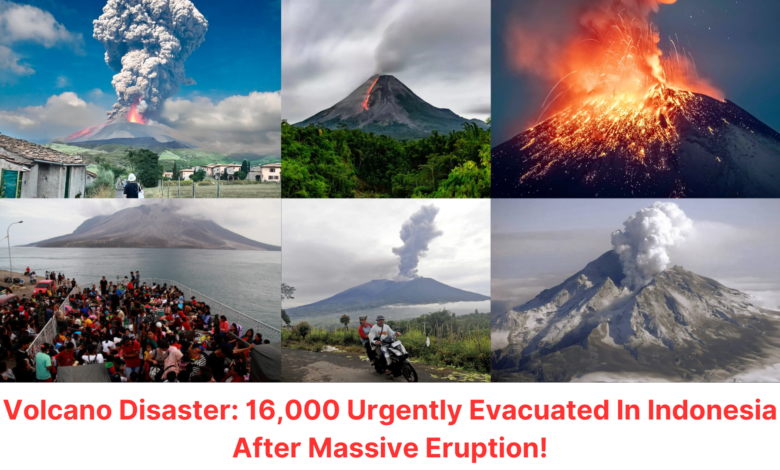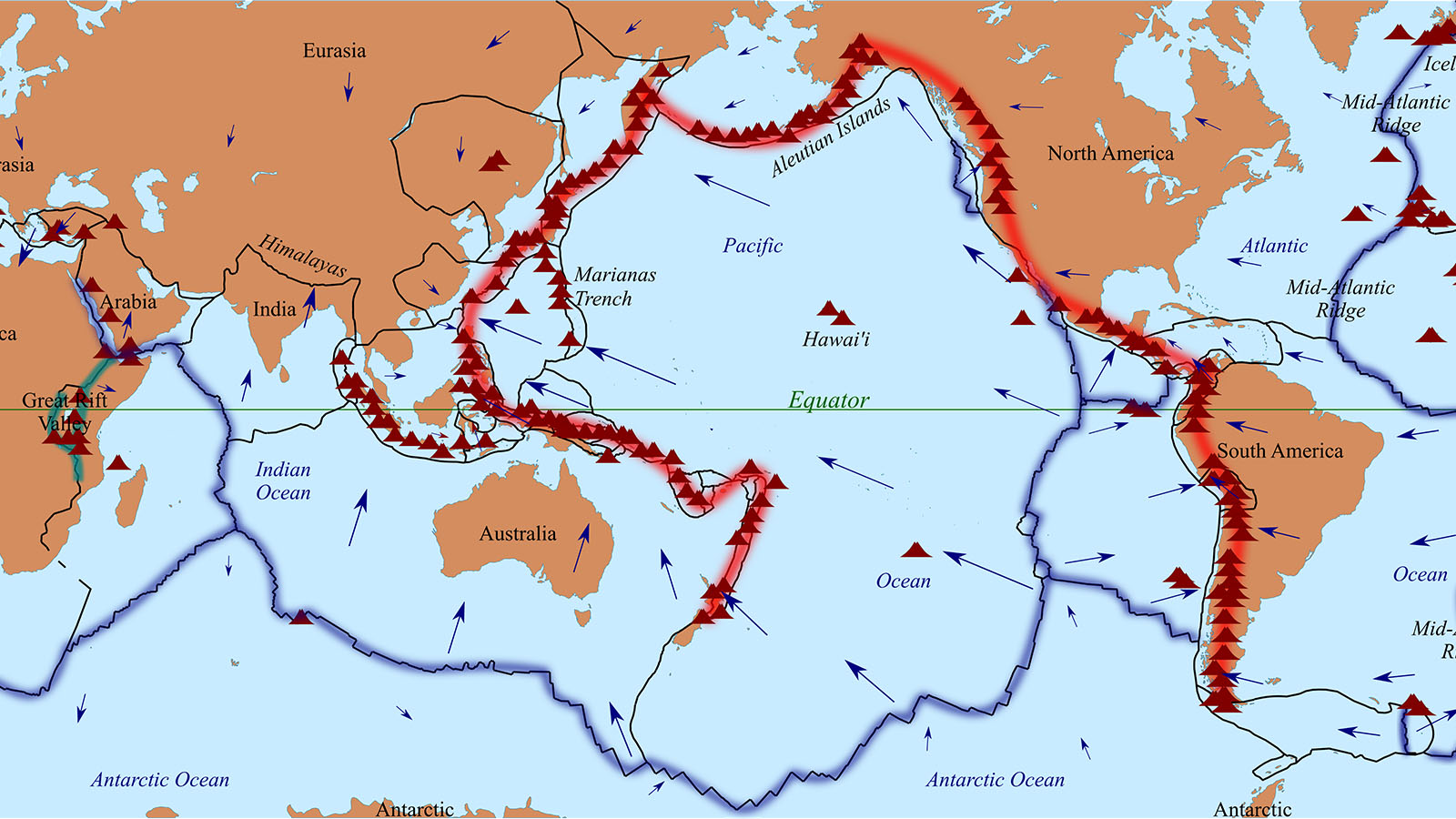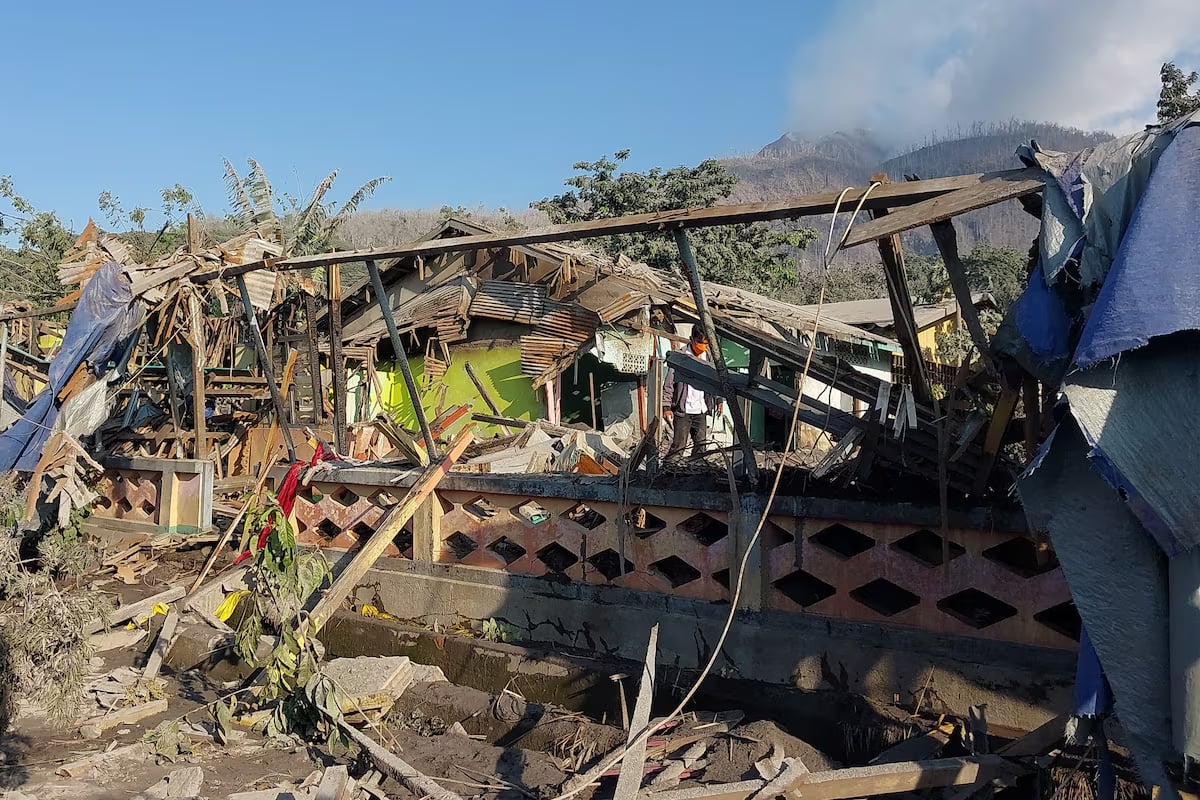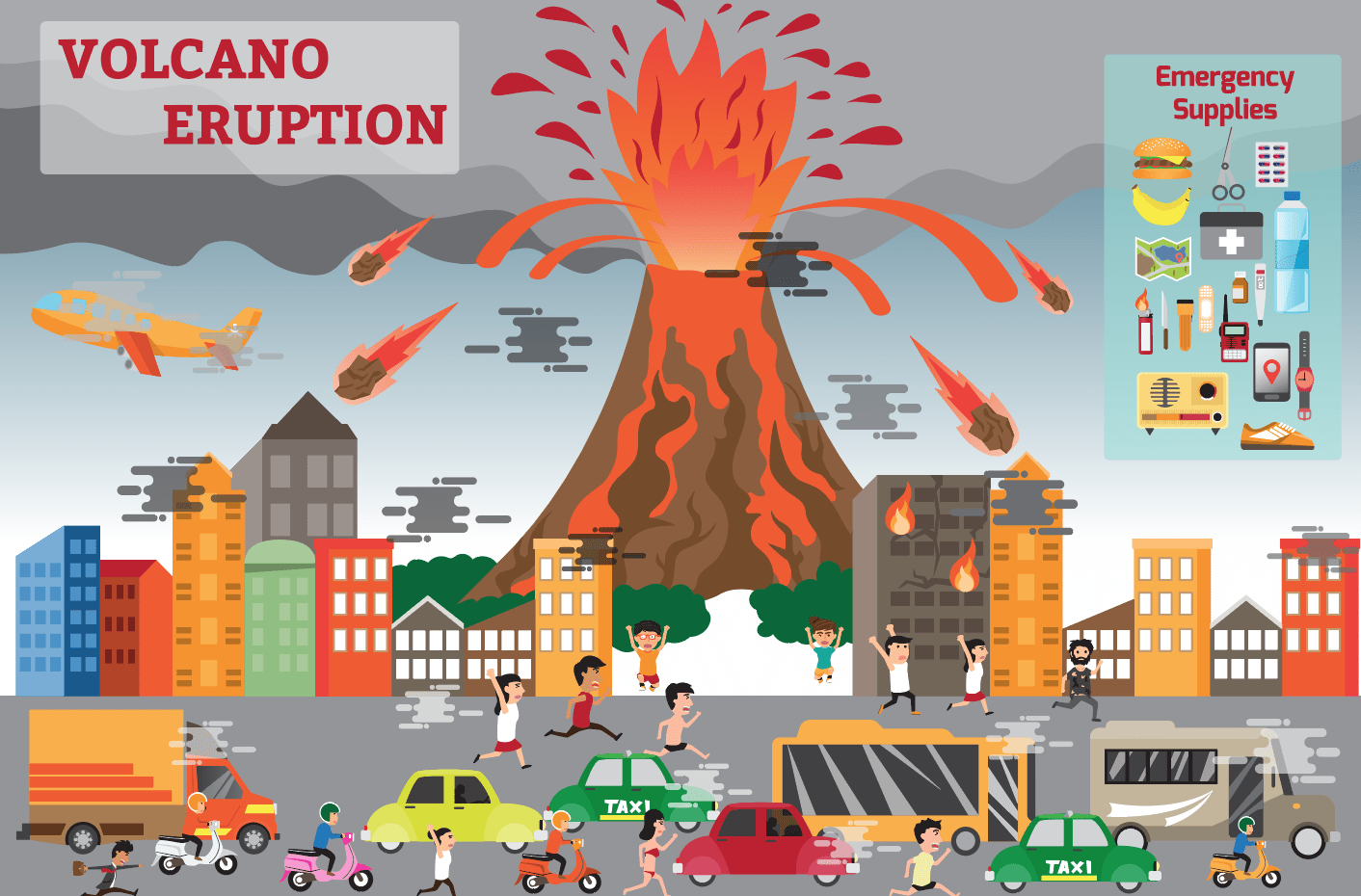Volcano Disaster: 16,000 Urgently Evacuated In Indonesia After Massive Eruption!
Indonesia evacuates 16,000 after Mount Lewotobi volcano eruption, emphasising the need for disaster preparedness in tectonically active regions.

Lewotobi Laki-Laki is one of the 120 active volcanoes in Indonesia. It sits on the unpopular Ring of Fire, a horseshoe around the Pacific Ocean made of seismic fault lines, a ready source of earthquakes, landslides, and volcanic activity.
Indonesian authorities are now seeking to evacuate at least 16,000 people from Lewotobi Laki-Laki volcano in Flores Island, East Nusa Tenggara province, after the tragic event that has killed nine people and destroyed thousands of homes. The volcano erupted on Sunday night, followed by another eruption on Monday night, and it has now been raised to Indonesia’s highest warning level for volcanoes. Due to the ongoing dangerous activity of Mount Lewotobi, local authorities declared a state of emergency for 58 days to enhance protection for vulnerable groups.

Earlier, some first indications of increased seismic activity had been noted before the eruptions; however, an emergency evacuation plan for thousands of residents was initiated due to the extent of the volcanic activity. While ash blanketed the villages and pyroclastic flows threatened to reach the dangerous areas, emergency crews evacuated people from the endangered regions to minimise further fatalities as Lewotobi Volcano spewed out eruption products.
The volcano is still trembling, and officials in charge are closely watching for the following movements before considering another evacuation. This disaster highlights the risks faced by people living in Indonesia’s seismically active regions, as the effects of volcanic activity are consistently unpredictable.
Volcano Devastation: Villages in High-Risk Zones Hit by Ashfall and Lava Flow After Mount Lewotobi Eruption
Since the volcanic eruption, several villages and communities in the high-risk zone, especially near the volcano, have been affected terribly. In the Wulanggitang district, at least 10,000 people were affected by this eruption in 6 nearby villages, including Pululera, Nawokote, Hokeng Jaya, Klatanlo, Boru and Boru Kedang. Residents described how shocked they were when the crater began throwing fiery projectiles at their homes. Thick ash accumulates on residences, farming states, and roads, so the affected people find it hard to breathe or even travel.
The ashfall that settled several kilometres away affects everyday life; people run from one place to another to avoid toxic ash. Lahars and pyroclastic flows have also occurred, and hot liquid rock flows threaten some parts around the crater. It has been reported that thousands of homes have been affected, with most of these homes having been structurally brought down by the force of the eruption, and many of the houses are now unbearable to live in.

In addition, there are concerns that the eruption’s effects are equally dangerous for the regions, including flooding by ash-clogged Rivers, water poisoning and more devastating eruptions. Such a level of destruction, coupled with the active phase of the eruption, has put local administrations under tremendous pressure to organise the mitigation of the consequences of this disaster.
Volcano Evacuation Effort: 16,000 Relocated as Authorities Battle Logistical Challenges
The local administration has initiated a large-scale evacuation to prevent further tragedies and ensure the residents near Mount Lewotobi Laki-Laki are safe. Currently, at least 16,000 people from several villages in the high-risk zones have been evacuated to the available temporary structures on safer grounds. Such evacuation zones are sited to minimise the risk of lava flows, ashfall and other forms of volcanic activity.
The Indonesian National Board for Disaster Management oversees the evacuation process during disasters. It uses land and air transport around the clock to move people to safer areas. However, it faces significant challenges, including damaged roads, transportation issues caused by ash, and overcrowded shelters.

Such issues are handled by working in safe zones, ensuring every affected person has their needs met, and getting some food, water and health help. The large-scale and time-bound nature of the evacuation suggests the seriousness of the volcanic crisis and the imperative for constant following since the situation progresses.
Citing the ongoing emergency, relief teams have distributed 500 food packages, protein supplements, tarps, tents and blankets to the eruption evacuees. Hundreds of the displaced residents fled with the clothes on their backs, leaving behind essential belongings in the rush to get out of harm’s way from the volcanic danger. Relief supplies are necessary so that those affected have access to what they need, including essential basics while taking shelter in temporary camps so they can ease the immediate hardships as they work towards recovery.
Volcano Crisis: Indonesian Government Leads Swift Evacuation and Response Efforts Following Mount Lewotobi Eruption
When the eruption proceeded, the government immediately proclaimed and mobilised a state of emergent authority and emergency teams. The government’s response time was good because evacuating the people was conducted within several hours after the eruption. DNBP and local governments evacuated thousands of people to safe zones and provided them with the necessary resources on time.
To minimise the risk of a future volcanic eruption, the Indonesian government intends to permanently settle thousands of people living within a 7 km radius of the Mount Lewotobi Laki-Laki crater. During this process, the government will build houses for the affected families so they can settle in safer areas outside the drastic area.
On the other hand, Mount Iya is showing increased activity, and the volcano agency is watching. The alert level has been raised from the second lowest to the second highest. This situation should be prevented. The relocation policy shows that a sovereign will offer its citizens protection against the dangers of active volcanoes.
After the eruption, proactive measures were taken to prioritise everyone’s health during relocation. Although ashfall-related respiratory problems are still a concern, especially for those with pre-existing medical conditions, officials have already provided protective equipment such as masks and face shields to ensure everyone’s health and safety.

The medical teams have been put on the ground to rescue those needing medical attention due to the injuries caused by the eruption, treat those who may have inhaled ash, and attend to vulnerable people, including older adults and children who may be more sensitive to the effects of ash.
The temporary structures have also been provided with simple healthcare facilities and necessary medicines, and paraphernalia has also been provided at the evacuation centres for people with other illnesses. Constant surveillance of air quality and new health conditions enables new health risks that may arise from volcanic activity to be countered early to reduce the long-term health consequences of the eruption.
Volcano Eruption Wreaks Environmental Havoc: Air Quality, Agriculture, and Water Sources Severely Affected
Mount Lewotobi Laki-Laki poses a significant threat of environmental devastation. As its name suggests, ashfall has severely damaged the air quality, leading to health hazards for people and wildlife. The soil has been significantly tainted, agricultural fields are devastated, and the local plants, animals, and farmers’ livelihoods are affected. In addition, the ash will pollute nearby drinking water sources and destroy aquatic life. If the situation is not addressed, the long-term environmental consequences of the eruption could devastate the affected communities.
Strengthening Volcano Preparedness
Indonesia has been successfully building preparedness and early warning systems to reduce the effects of volcanic eruptions. The country’s volcanology agency, which monitors seismic activity and volcanic signs through a network of sensors and data collection points, gives local authorities and communities real-time updates. In the case of Mount Lewotobi Laki-Laki, in the event of the eruption, early warning systems were activated in the days prior to the eruption, and people at high-risk places were asked to evacuate.
Action was fast because these warnings and government preparedness measures minimised casualties. Despite that, significant hurdles remain in reaching remote sites and maintaining comprehensive communication, especially when what you are trying to communicate about heads into a rapid ascent in volcanic activity. Driven by the need to improve resilience in future crises and reduce forgone social, economic and environmental opportunity costs, ongoing improvements to early warning protocols and public awareness are critical.

The Mount Lewotobi Laki-Laki volcano eruption reminds us of the importance of disaster preparedness, especially for countries like Indonesia that stand on an active tectonic boundary. Natural disasters can lead to significant damage, so it is essential to have early warning systems, clear evacuation plans, and public awareness to lessen their effects.
Countries in areas that often have earthquakes should focus on being prepared and building resilience. By adopting this strategy, they can mitigate the potential impacts of future disasters, safeguarding both lives and livelihoods.




